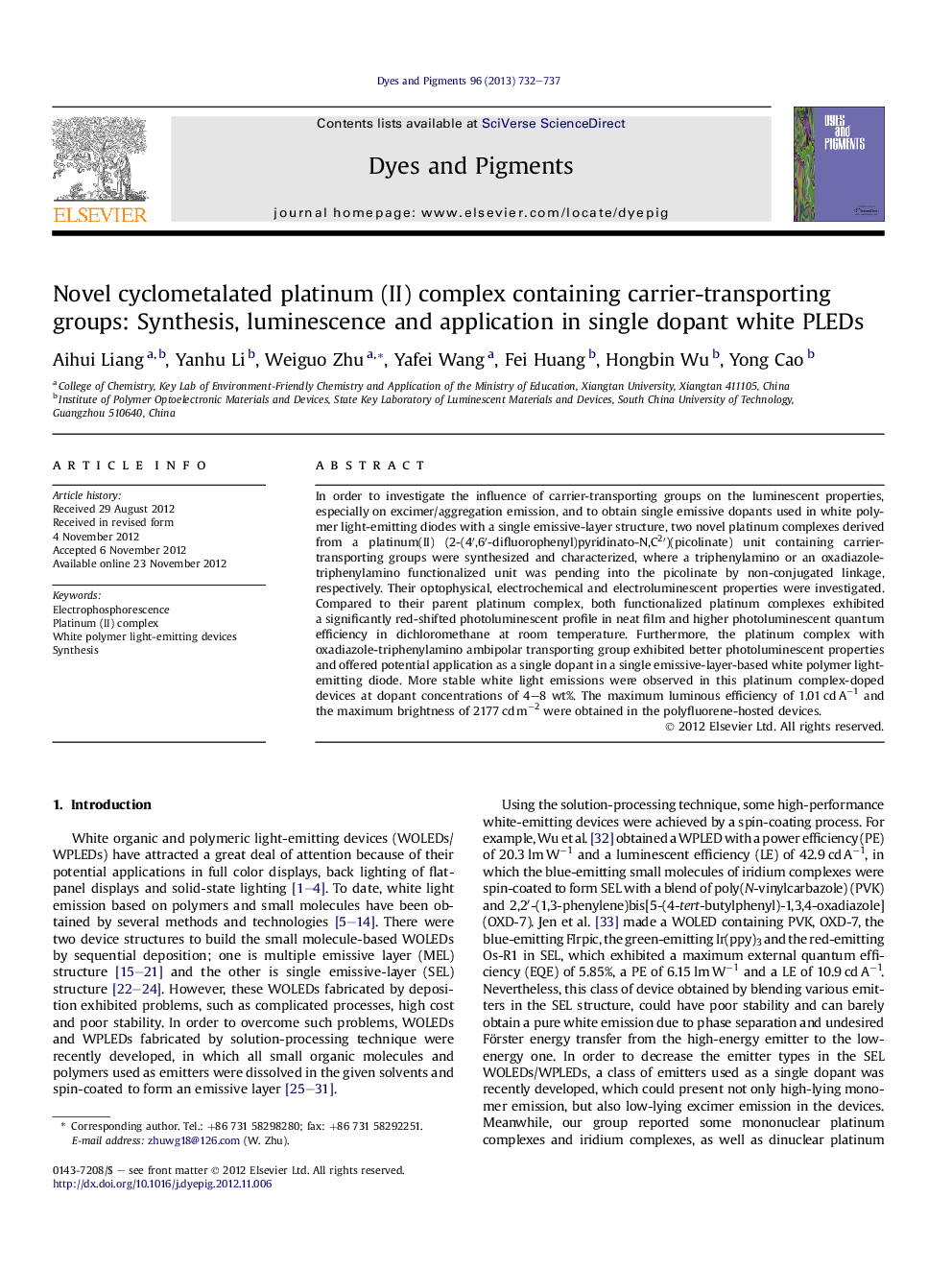| Article ID | Journal | Published Year | Pages | File Type |
|---|---|---|---|---|
| 176750 | Dyes and Pigments | 2013 | 6 Pages |
In order to investigate the influence of carrier-transporting groups on the luminescent properties, especially on excimer/aggregation emission, and to obtain single emissive dopants used in white polymer light-emitting diodes with a single emissive-layer structure, two novel platinum complexes derived from a platinum(II) (2-(4′,6′-difluorophenyl)pyridinato-N,C2′)(picolinate) unit containing carrier-transporting groups were synthesized and characterized, where a triphenylamino or an oxadiazole-triphenylamino functionalized unit was pending into the picolinate by non-conjugated linkage, respectively. Their optophysical, electrochemical and electroluminescent properties were investigated. Compared to their parent platinum complex, both functionalized platinum complexes exhibited a significantly red-shifted photoluminescent profile in neat film and higher photoluminescent quantum efficiency in dichloromethane at room temperature. Furthermore, the platinum complex with oxadiazole-triphenylamino ambipolar transporting group exhibited better photoluminescent properties and offered potential application as a single dopant in a single emissive-layer-based white polymer light-emitting diode. More stable white light emissions were observed in this platinum complex-doped devices at dopant concentrations of 4–8 wt%. The maximum luminous efficiency of 1.01 cd A−1 and the maximum brightness of 2177 cd m−2 were obtained in the polyfluorene-hosted devices.
► Novel platinum complexes derived from 2(2,4-difluorophenyl)pyridine were obtained. ► The photo-physical and electroluminescent properties were studied. ► Both platinum complexes displayed higher photoluminescent quantum efficiency. ► The platinum complex with an A–D–A structure gave blue-shifted excimer’s emission. ► The fabricated PLEDs exhibited stable white electroluminescent properties.
